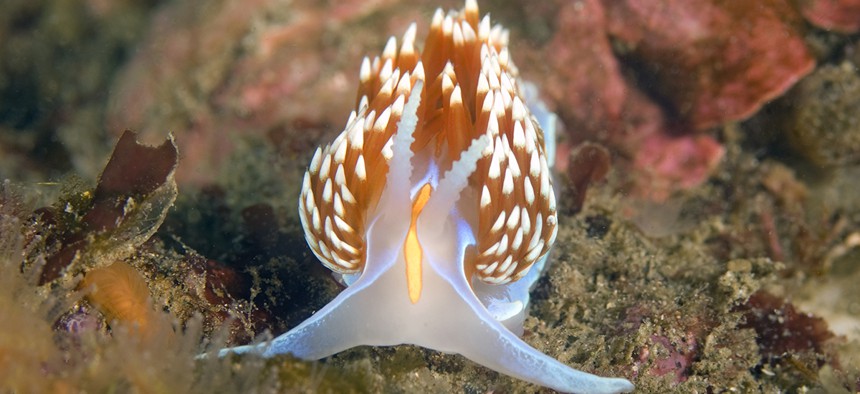This Biohybrid Robot Uses Sea Slug Muscles to Scoot Around

KGrif/Shutterstock.com
The researchers hope these robots will eventually be used to track down sources of pollution in waterways.
To power a swarm of tiny robots, scientists are turning to the humble sea slug. A team of researchers at Case Western Reserve University has developed a small sea-turtle-inspired robot that moves a 3D-printed shell with contractions using muscles from the mouth of a California sea slug.
The researchers, led by engineer Victoria Webster, hope their robots will eventually be used to track down sources of pollution in waterways, whether it’s a leaky pipe or an algal bloom. When the robots have done their duty, scientists can simply leave the robots to break down, thanks to biodegradable parts.
Tiny mechanical actuators to power robots are expensive and inefficient, so the researchers decided to try using muscle tissue to move their robots instead (as Harvard scientists did with a robotic stingray that used muscle cells from rats). The team quickly found that the muscles that control the mouth of a sea slug create the same motion needed to make their 3D-printed polymer shell crawl. And because the California sea slug lives in the harsh coastal tide pools of the Pacific Ocean, its muscles can handle the rough conditions the robots might encounter.
The muscle tissue needs some kind of energy to power contractions, but these biohybrid robots don’t need batteries. The muscle tissue can use simple glucose, just as if the muscle were still in a sea slug. The current version of the robot can use glucose in the surrounding water just by letting the sugary water wash over the muscle tissue. Because the sea slug has an open circulatory system where blood flows freely through tissue, “we don’t need the veins or arteries,” Webster said.
Future robots will likely move in different ways. At only one step every three seconds, “this version moves pretty slowly,” Webster said, but the team is developing another version that moves more like an inchworm. A robot’s speed depends on how fast the powering muscle can contract, but “there’s a lot we can do to optimize the geometry” to help the robots move more efficiently, Webster said.
In any case, the more robots there are hunting for pollutants in a waterway, the less speed matters, so “the idea is to release a big swarm of these,” Webster said. By adding an environmentally friendly fluorescent tracer, scientists will be able to see when the robots cluster around a source of pollution, like a chemical leak.
Webster plans to soon start using collagen from sea slugs to 3D print a shell for the robots, so that the biohybrid machines would be made entirely from carbon-based materials, instead of metal or plastic. The hope is that the biohybrid robots will eventually be less hybrid and more biology.
NEXT STORY: Two Big Questions for Elon Musk





